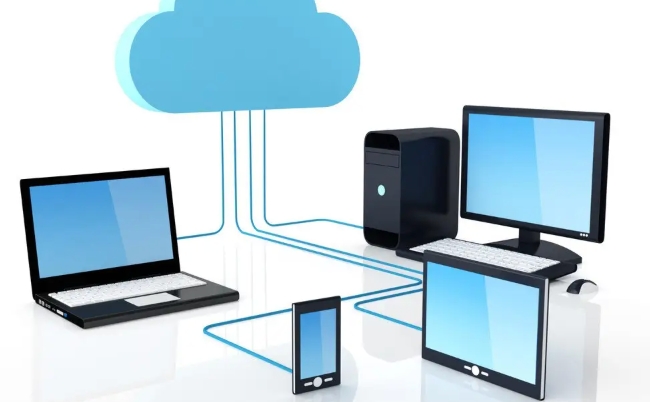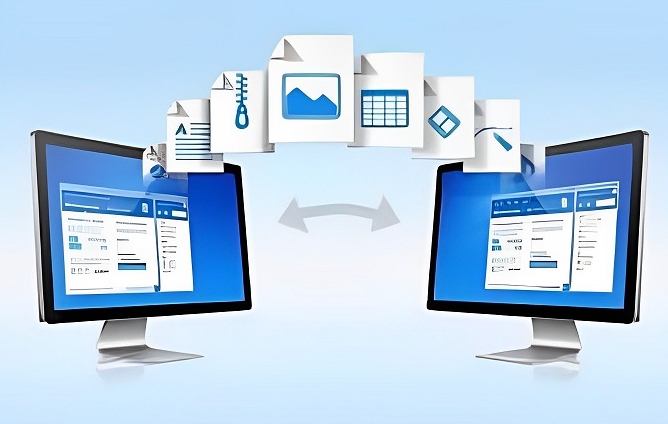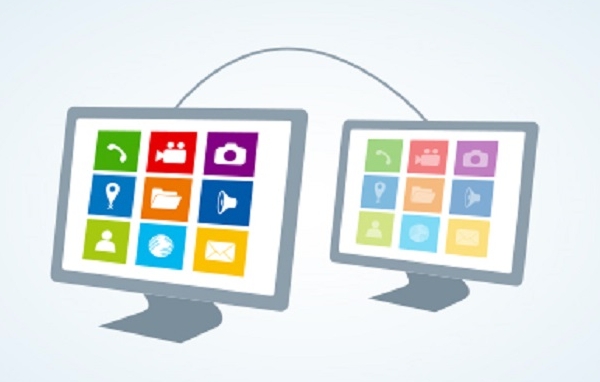Remote desktop requires two-factor authentication because it only relies on usernames and passwords by default, and is susceptible to brute-force cracking and password leakage, especially when exposed to public networks. With two-factor authentication (2FA), it is difficult for an attacker to bypass layer 2 verification, such as SMS verification codes, dynamic codes, or hardware tokens, even if the password is stolen. Implementation methods include: 1. Use third-party remote desktop software that supports 2FA, such as AnyDesk and TeamViewer; 2. The enterprise environment can cooperate with NPS and RADIUS servers such as Duo Security or Microsoft NPS extensions; 3. Azure virtual machine users can enable MFA in combination with Azure AD. Individual users recommend using remote control software with built-in 2FA functions directly, such as AnyDesk enables two-step verification or TeamViewer authorization through the App. If you adhere to native RDP, you can use Azure AD and Microsoft Authenticator to achieve some multi-factor verification. Pay attention to when configuring: Save alternate verification codes to prevent loss of equipment; enterprise users should first test the process; ensure time synchronization to avoid dynamic code failure; confirm that the document clearly supports 2FA settings before selecting software.

Turning on the two-factor authentication of remote desktop is actually adding another layer of security verification based on your password. This can significantly reduce the risk of account being cracked, especially when you use remote desktop to manage important servers or sensitive data.

Why does remote desktop require two-factor authentication?
Remote Desktop (RDP) itself only relies on username and password for authentication, which is susceptible to brute-force cracking, password leakage and other attacks. If your remote desktop service is exposed to the public network, the risk is even higher. Using two-factor authentication (2FA), even if the password is stolen, it is difficult for an attacker to bypass the second layer of verification methods, such as SMS verification codes, mobile application dynamic codes, or hardware tokens.

How to add two-factor authentication to remote desktops?
The remote desktop protocol that comes with Windows does not support direct configuration of two-factor authentication, but you can implement it in the following ways:
- Use third-party remote desktop software : such as AnyDesk, TeamViewer, or LogMeIn, which integrates the 2FA login function itself.
- With Network Policy Server (NPS) RADIUS Server : This method is suitable for enterprise environments and implements secondary verification of remote desktop login by configuring NPS and 2FA-enabled RADIUS servers (such as Duo Security, Microsoft NPS extension).
- Combined with Azure AD and MFA : If you are using an Azure virtual machine and your user account is managed by Azure AD, you can enable Microsoft's Multi-Factor Authentication (MFA) to force verification of your phone number or application verification code when you log in remotely.
How can individual users make it easier?
For ordinary users, the most convenient way is to replace native RDP with remote control software that supports 2FA. For example:

- Use AnyDesk : After registering an account, enable two-step verification in the settings. You need to enter a one-time verification code for each login.
- Using TeamViewer : After binding an account and enabling two-factor authentication, you must authorize it through the mobile app when connecting remotely.
- If you stick to Windows native remote desktop, you can consider using Microsoft Authenticator applications to achieve a certain level of multi-factor verification by using Azure AD with remote access gateways (such as RD Gateway).
Things to note during configuration
Although it doesn't sound difficult, some details are prone to errors in actual operation:
- After turning on 2FA, remember to save the backup verification code to prevent the phone from losing or unable to obtain the verification code.
- If you are an enterprise administrator, it is recommended to try the entire process on a test account first to ensure that it does not affect normal login.
- When using RADIUS or NPS, time synchronization is very important, otherwise the dynamic verification code will fail.
- The remote control software of different manufacturers has different support for 2FA. It is best to check whether the document clearly states how to enable it before choosing.
Basically that's it. Adding a 2FA to a remote desktop is not complicated, but it is indeed easy to ignore, especially when you use it yourself, you always feel that "it won't be so unlucky". In fact, take some time to set it up to avoid worrying about your account being hacked in the future.
The above is the detailed content of Using two-factor authentication with Remote Desktop. For more information, please follow other related articles on the PHP Chinese website!

Hot AI Tools

Undress AI Tool
Undress images for free

Undresser.AI Undress
AI-powered app for creating realistic nude photos

AI Clothes Remover
Online AI tool for removing clothes from photos.

Clothoff.io
AI clothes remover

Video Face Swap
Swap faces in any video effortlessly with our completely free AI face swap tool!

Hot Article

Hot Tools

Notepad++7.3.1
Easy-to-use and free code editor

SublimeText3 Chinese version
Chinese version, very easy to use

Zend Studio 13.0.1
Powerful PHP integrated development environment

Dreamweaver CS6
Visual web development tools

SublimeText3 Mac version
God-level code editing software (SublimeText3)

Hot Topics
 How to undo multiple times in Photoshop
Jun 28, 2025 am 12:08 AM
How to undo multiple times in Photoshop
Jun 28, 2025 am 12:08 AM
In Photoshop, continuous undoing of multiple steps can be achieved through three methods. First, use the "History" panel and click any step to fall back to this state; second, press the Alt Ctrl Z (Windows) or Option Command Z (Mac) shortcut keys to gradually undo; third, create a "snapshot" to save the key state so that it can be restored at any time. Among them, mastering the "History" panel and undo shortcut keys can meet daily photo editing needs.
 How to enable the Adobe Acrobat extension in Chrome?
Jul 02, 2025 am 12:51 AM
How to enable the Adobe Acrobat extension in Chrome?
Jul 02, 2025 am 12:51 AM
To solve the problem that Chrome browser cannot preview PDFs online, 1. Install the official Adobe Acrobat extension; 2. Enter the extension page to make sure it is enabled and set to allow incognito mode to run; 3. Turn off the built-in PDF reader option in Chrome settings to set it to be opened by default with Acrobat; 4. If you encounter a prompt "Managed by Organization", you need to contact the administrator to handle it. After completing the above steps, you can directly view PDF files in your browser.
 How to send a document for signatures with Adobe Acrobat Sign?
Jul 02, 2025 am 12:44 AM
How to send a document for signatures with Adobe Acrobat Sign?
Jul 02, 2025 am 12:44 AM
The steps to send documents for others to sign with Adobe AcrobatSign are as follows: 1. Prepare the final version of the PDF file. If there is no PDF, you can upload it to other formats to automatically convert it, and ensure that the content is correct; 2. Create a new signing process after logging in, add recipient information and set the signature location, assign permissions to each signer, and adjust the signing order; 3. Optionally set email reminders, deadlines and signature methods to improve signing efficiency; 4. Send the document after confirming that it is correct, track the signing status through the system in real time, and download a copy or resend a reminder to complete the signing process.
 How to flatten a PDF in Adobe Acrobat?
Jun 30, 2025 am 12:05 AM
How to flatten a PDF in Adobe Acrobat?
Jun 30, 2025 am 12:05 AM
Retaining layer information when exporting PDFs can cause compatibility issues, and flattening can resolve this issue. Use the "Pre-press Check" tool of Adobe AcrobatProDC to flatten the PDF with one click, which is suitable for most cases; 1. Open the PDF, click "Tools" > "Pre-press Check" on the right; 2. Click the gear icon, select "Flat Page Content", and confirm and save the file. Advanced users can manually adjust settings: 1. Create a new configuration file and check "Flat Transparency" in "Repair"; 2. Set the resolution and apply the configuration. After flattening, you should pay attention to problems such as larger file size, reduced editing, and text conversion to pictures. It is recommended to keep the original copy for modification.
 Why are my lines not showing up in AutoCAD?
Jul 01, 2025 am 12:04 AM
Why are my lines not showing up in AutoCAD?
Jul 01, 2025 am 12:04 AM
Problems are usually caused by layer settings, viewport display, line-type scale, or graphic refresh. 1. Check whether the layer is closed or frozen, and confirm that the color is different from the background; 2. Use ZOOMEXTENTS in the viewport to ensure that the geometry is within the visual range; 3. Adjust the LTSCALE value to fix the linear scale abnormality; 4. Check whether there are color output restrictions in the printing style sheet; 5. Try the REGEN command or switch the visual style to solve the graphics rendering problem. Check the reasons in order to quickly locate the reasons.
 How to create a neon effect in Photoshop
Jul 02, 2025 am 12:16 AM
How to create a neon effect in Photoshop
Jul 02, 2025 am 12:16 AM
The key to making neon light effects in Photoshop lies in the matching of layer style and overlay method. The specific steps are as follows: 1. Use "Inner Glow" and "Gradial Overlay" to create basic luminescence, select neon tones and adjust parameters to simulate the brightness of the lamp; 2. Add "Outer Glow" and combine "Gaussian Blur" to enhance the three-dimensional sense of the halo; 3. Improve the texture by adding noise to make the effect closer to the real neon; 4. Use dark backgrounds, projections and atmosphere materials to enhance the overall visual impact.
 How to make an image look old in Photoshop
Jul 02, 2025 am 12:47 AM
How to make an image look old in Photoshop
Jul 02, 2025 am 12:47 AM
To make pictures look age-like in Photoshop, you need to imitate the characteristics of old photos and master the key steps. First, add warm tones to increase yellow and red to reduce blue by Color Balance, or use Gradient Map to select brown and yellow gradients and adjust blending mode and opacity. Secondly, adding texture and noise can be used to control the values ??using the Add Noise filter, or overlay old photo textures and set blending mode. Again, make scratches and edge wear to download scratch maps as layers and adjust positions and modes, or use built-in filters to simulate effects. Finally, pay attention to moderate processing, use adjustment layers and masks to facilitate modification, and appropriately reduce contrast to make the picture softer and more natural.
 How to colorize a photo in Photoshop using neural filters
Jul 02, 2025 am 12:33 AM
How to colorize a photo in Photoshop using neural filters
Jul 02, 2025 am 12:33 AM
When using neural network filters to color photos in Photoshop, you need to pay attention to key steps and details. First, make sure that the software version supports this function, log in to the Adobe account and download and install the filter plug-in; then open the "Smart Coloring" option, and let the AI ??automatically finish the coloring after downloading the model; then check the results, use the brush tool, local application filters or combined with desaturation to manually color the error area; finally, after confirming that the effect is correct, export and save, it is recommended to keep the two versions of the AI ??layer and the final product. Although the entire process is simple, you need to pay attention to network connection, model loading and post-adjustment techniques.






